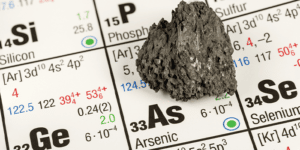Praedicat Blog – So, I can’t have my cake and eat it too? by Dave Loughran The first non-nutritive sweetener saccharin was discovered accidentally in 1878 by a Johns Hopkins researcher investigating…
read moreDebate over harmful effects of social media and microplastic pollution spilling into U.S. courts by David Loughran Legislators and regulators are putting intense pressure on social media and plastics companies…
read moreEmerging Interest: The Case of Lavender Oil by David Loughran Lavender oil, a popular ingredient in many personal care products for both adults and children, is the latest addition to…
read moreThe past, present, and future of PFAS litigation in the United States Praedicat’s science-based data and analytics are designed to help casualty carriers manage emerging risks when scientists first begin…
read moreMay 2021 – Climate change is here and so is climate-related litigation. But what does climate change have to do with the recent lawsuits filed against baby food manufacturers? As…
read moreTestifying before Congress in 1994, James Johnston, then CEO of R.J. Reynolds, defended his company’s tobacco products by claiming they were no more addictive than Twinkies. At the time, that claim…
read moreThe “Toxic Trio” of hazardous cosmetic ingredients is now the “Toxic Twenty.” Responding to environmental and consumer protection organizations like the Environmental Working Group, the California state assembly in 2019…
read moreImagine the sight and sound of a sofa engulfed in flames juxtaposed with the question “Are you sitting comfortably?” This last-minute media campaign by the industry-funded lobby Citizens for Fire…
read moreFifth generation (5G) wireless networking technology promises to greatly improve wireless communication, significantly increasing data transmission speeds and reducing latency. The anticipated quantum leap in wireless networking performance is made…
read moreIn 2007 the International Agency for Research on Cancer (IARC) classified shift work with circadian disruption as probably carcinogenic to humans on the basis of sufficient evidence in animals and…
read moreCannabidiol, or CBD, is all the rage. The non-psychoactive cannabinoid derived from marijuana plants can be found in myriad food, beverage, dietary supplement, and cosmetic products on the shelves of…
read moreThe increase in the incidence of various cancers in the 20th century led scientists to investigate potential environmental causes such as asbestos, silica, particulate matter, benzene, and formaldehyde. The signature health…
read more








